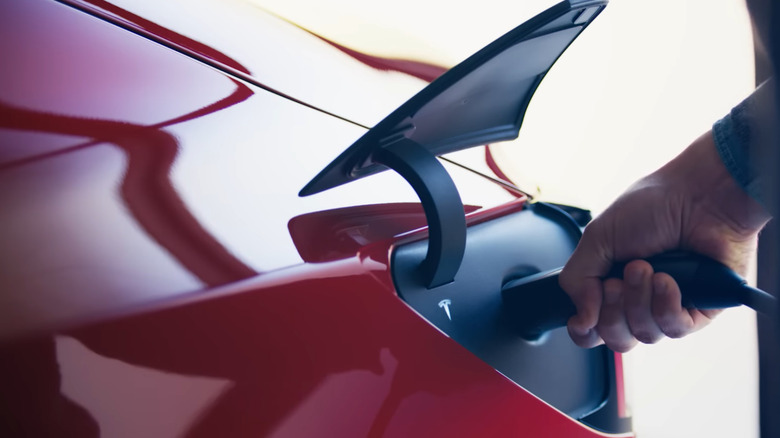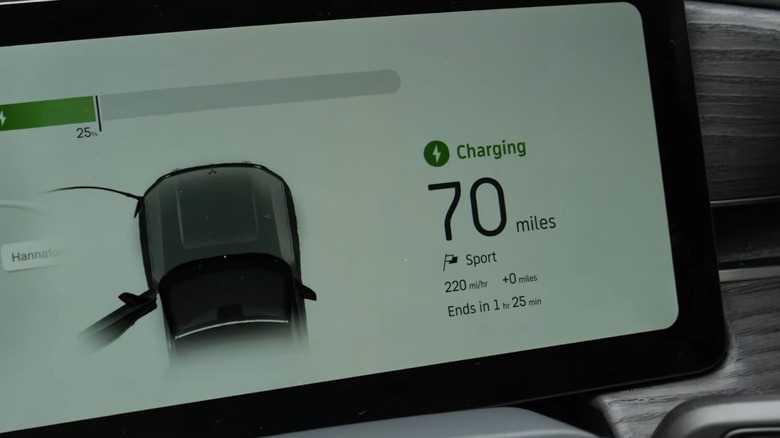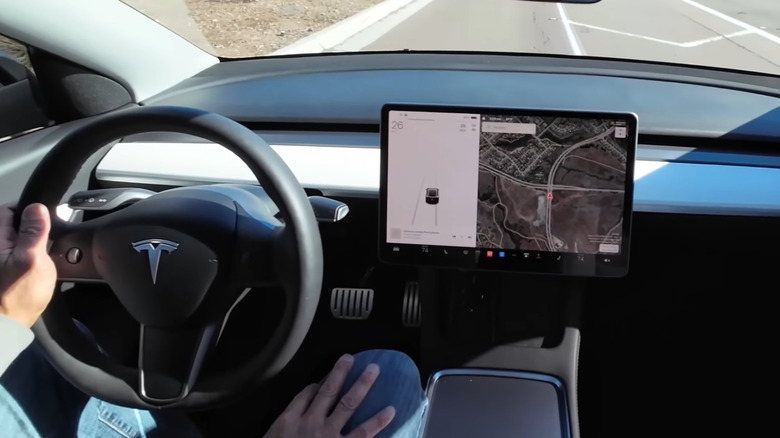How To Properly Maintain Your Electric Vehicle's Battery
There's been a huge push to adopt electric vehicles. They're better for the environment due to lower tailpipe emissions, are cheaper to maintain with fewer moving parts to replace and service, and cost a lot less to run compared to gas-powered alternatives. On the flip side, EVs are not cheap and have a high initial cost.
Just like the battery in your smartphone, laptop, or any other gadget you use daily, your electric vehicle's battery needs some TLC to work optimally. Good EV battery maintenance has a direct impact on performance, range, and safety, helping reduce repair costs, prevent unexpected breakdowns, and maintain its original factory efficiency.
They say it's the simple things that make the biggest difference, and when it comes to maintaining your EV's battery, that couldn't be closer to the truth. Simple habits, such as not charging your EV to 100%, avoiding extreme temperatures, limiting frequent acceleration, and minimizing fast charging, can significantly slow down your electric vehicle's battery degradation.
Best charging practices for electric vehicles
As strange as it sounds, avoid charging your EV battery to 100%. Keeping your battery between 20% and 80% is ideal because full charges stress lithium-ion battery cells over time, accelerating degradation. Just like the fuel in a gas-powered car, don't let your battery drop to empty (below 20%). Deep discharges exert stress on the EV battery internals, causing chemical reactions that, over time, reduce its original capacity and ability to hold a charge.
Let's be honest, folks. Between school runs, work, and running daily errands, there's hardly enough time to charge your smartphone, let alone an electric vehicle. DC fast charging can be a lifesaver. Unfortunately, while convenient, DC fast charging generates heat and stress on the battery since it uses direct current (DC) to charge the battery. Therefore, it is advisable to use it sparingly. If possible, invest in the safer choice, a Level 2 home charger. Level 2 charging uses alternating current (AC) from the power grid and takes several hours.
Most electric vehicle manufacturers offer an eight- to ten-year (100,000 to 150,000 miles) warranty on battery packs. California protects consumers by requiring a 15-year (150,000-mile) warranty for PZEV (Partial Zero Emission Vehicle) parts (10 years for batteries). ZEV (Zero Emission Vehicle) warranty details need to be confirmed by the manufacturer. Still, you'll only be eligible for warranty coverage if the battery fails within that period and the vehicle has been serviced properly. As a result, proper EV battery maintenance is essential.
External habits that will protect your EV battery
Keeping your EV battery healthy is not just about good charging practices but all-around care. For example, extreme cold or hot temperatures can upset EV battery chemistry, reducing its range by up to 46%. Therefore, during cold weather, precondition your EV to offer better range and preserve battery health. Just like you would your conventional gas-powered vehicle, park your electric vehicle in a shaded area or indoor parking spot. According to a recent study, warm temperatures may be suitable for EV batteries up to 90 degrees Fahrenheit, but when temperatures reach 100 degrees, EV range is impacted by between 17% and 18%. Over time, this may lead to reduced efficiency and lifespan of your electric vehicle's batteries.
While flooring your EV from time to time can pump up the juices in your body, it demands more from the battery. Sudden, hard acceleration or braking causes power spikes — brief surges in the electricity demanded from the battery — which can degrade its health over time. It can also generate excessive heat in the battery, which reduces the system's efficiency and longevity. To protect your EV's components, try to accelerate and brake smoothly whenever possible.
Some EV owners experience range anxiety, and as a result, they only use their electric vehicles occasionally or for short trips. While there's nothing wrong with this, EV owners should note that prolonged idle periods can impact their electric vehicle's battery health and lead to gradual self-discharge. If you have to park your electric vehicle for an extended period of time, initiate long-term storage mode or regularly monitor battery levels. Don't forget to make use of OTA (over-the-air) updates to get the most out of battery management improvements from the manufacturer.


